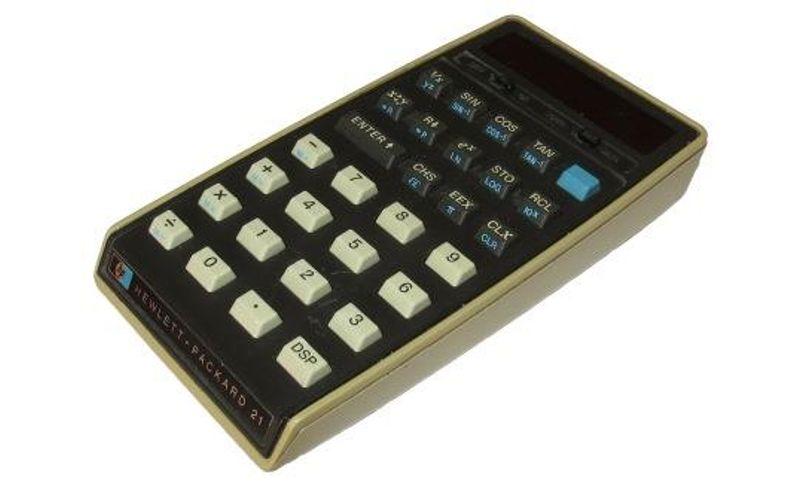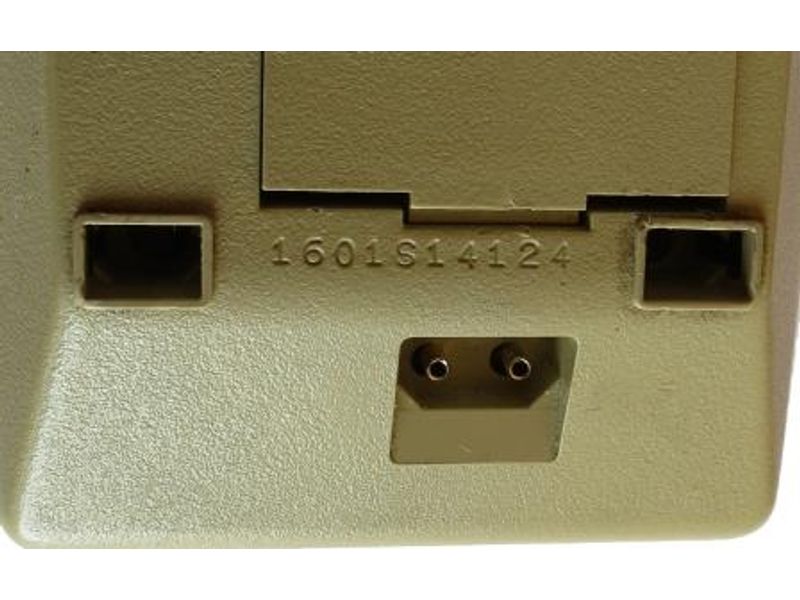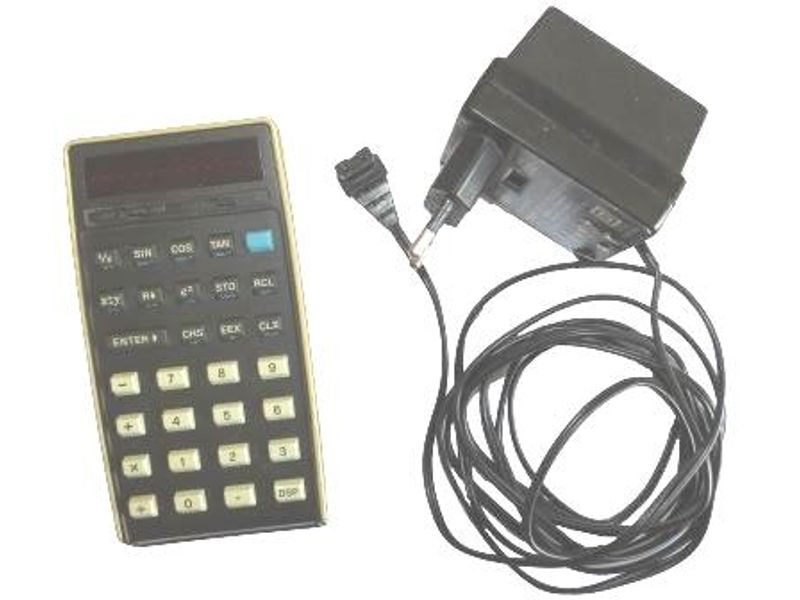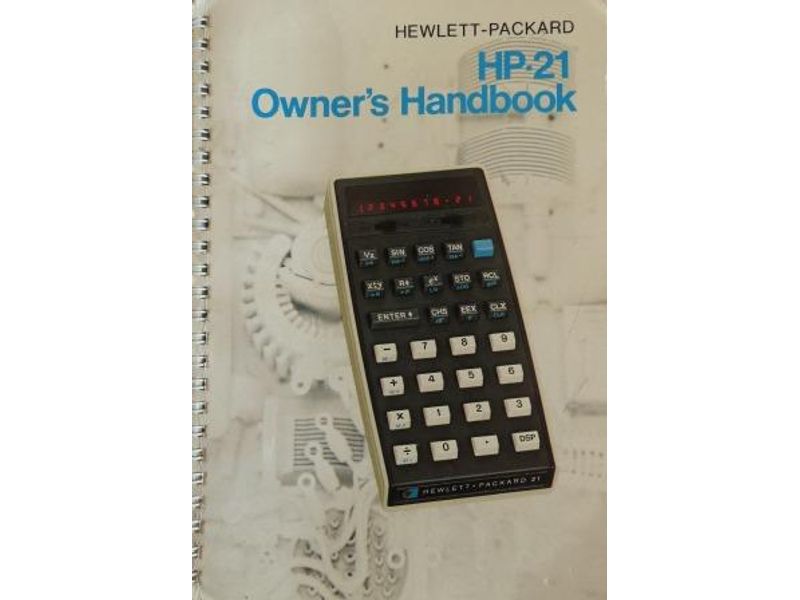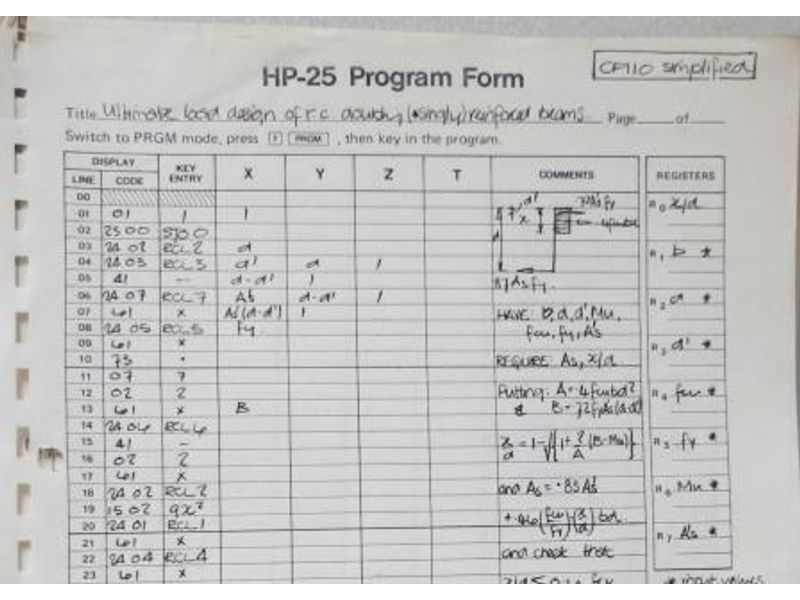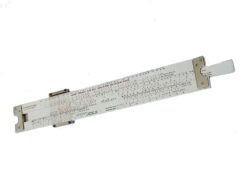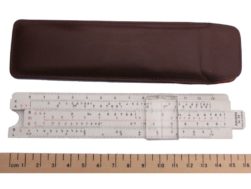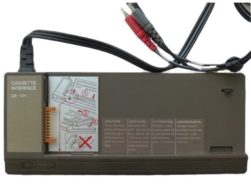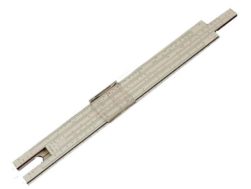Description
HP-21 Scientific Pocket Calculator with charger and owner’s handbook with program scripts (c.1975).
This model was the first of the HP-20 series. It was much the same as the HP-35 but was a smaller and less expensive package. The HP-21 had a third more ROM than the HP-35 and therefore could accommodate some additional functionality with room for a few extra features including trig functions in radian mode (the mode was selected by the slide switch seen top right just below the display screen), storage (see the M-, M+, Mx and M/ keys in blue on the front edge of the -, +, x and / keys) and polar/rectangular conversion. In 1975 the calculator was priced at $125 for sale in the USA.
A collection of program scripts (80 No) for the HP-25 are also held. The HP-25 is a descendant of the HP-21 with a much larger set of functions than the HP-21. The HP-25 was programmable with 49 lines of memory, making it the least expensive and smallest of HP’s programmable calculators. These scripts were donated by Peter Alan McMahon. Interestingly, he writes:
“The machine [HP25] operated on the basis of Reverse Polish Notation — a stack of four stores (X to T) into which the numbers were pushed and then operated on; combined, divided etc. The language was really like mainframe Assembly Language and the arithmetic processing was much the same as that of the CPU of a computer. Except you only got to store 8 numbers in what it called Registers 0 to 7.
“You got a magnificent 49 programming steps, and of course you were always short. A complete re-ordering of the program was usually required to save one or possibly two steps.
“Mind you, it was amazing what you could get done with that measly allotment of code lines.
“The other thing was its volatile memory, so that each time you switched off the machine, you lost your program and had to plug in those 49 key entries all over again. The HP programmable calculators that followed had a little magnetic strip that fed into the machine so you could store your programs and load them up quickly.
“Of course, soon after, much of what you could do with this was do-able on a spreadsheet like Supercalc. The HP25 did have a looping facility though, with a tested “GOTO” so you could iterate towards a solution. And there was a kind of primitive matrix algebra you could do with it too. It was very satisfying as I recall!
“They were not very expensive as electronic calculators had gone up till then. Mine was bought for my by Mr Palmiris the Site Agent on the Dibba-Khor Fakkan highway in 1975, after I assured him the modest investment would save his QS weeks of time calculating earthworks cross-sections. And it did.”


